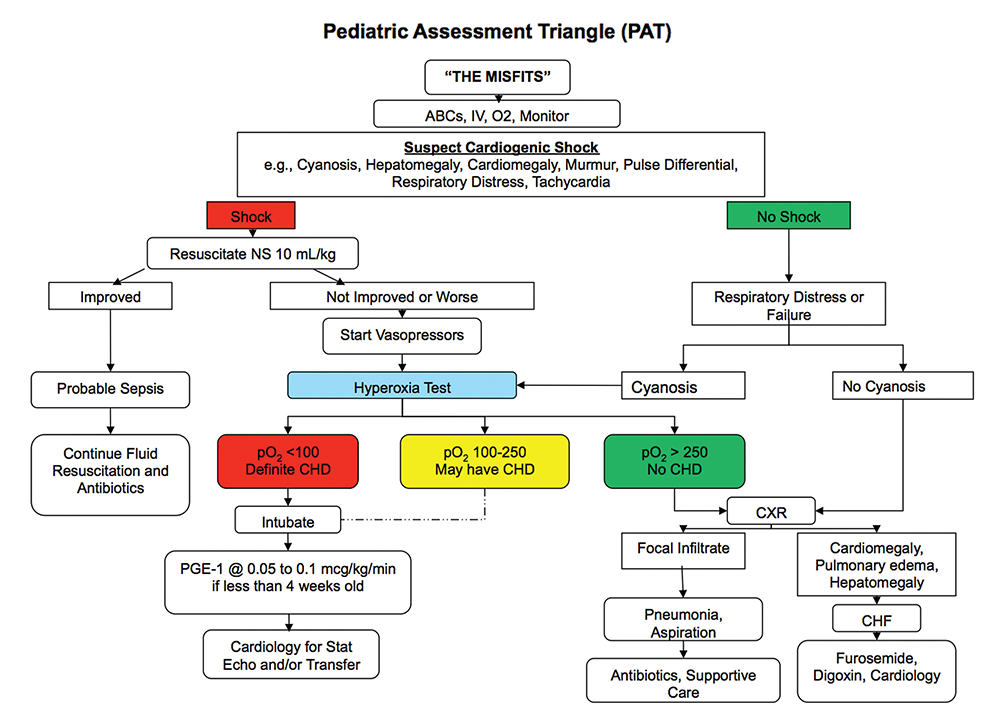

Explore This Issue
ACEP Now: Vol 35 – No 02 – February 2016(click for larger image) Figure 2. Neonatal Shock Algorithm
© Pediatric Emergency Playbook
If you are giving this child 100 percent FiO2 and he doesn’t improve 100 percent—that is, his pO2 on ABG is not at least 100 torr—then he has congenital heart disease until proven otherwise. The lifesaving intervention necessary is the initiation of prostaglandins to help keep the ductus open, preserving that flow of blood. The most common side effects of prostaglandins include apnea and hypotension, so you should be prepared to address both of those conditions. See Figure 2 for a neonatal shock algorithm that incorporates these assessment tools.
“We all learned from someone who learned from someone else. We have experience spanning decades and thousands of patients,” said Dr. Horeczko. “This provides a platform for building a community together and sharing collective knowledge. I am able to provide the audience with not only the pearls and the rapid-fire information that we all crave but also with the thought process behind it. It helps to get at some of the intangibles of the practice of medicine.”
I congratulate Tim on his new endeavor and thank him for making it available to the masses. I have listened to his podcasts in the car or in the office and have taken away some very useful nuggets of information that I have already utilized. I look forward to his next installment. Give it a listen—I think you will enjoy it, too.
 Dr. Sorrentino is professor of pediatrics in the division of emergency medicine at the University of Alabama at Birmingham.
Dr. Sorrentino is professor of pediatrics in the division of emergency medicine at the University of Alabama at Birmingham.
Pages: 1 2 3 | Single Page





No Responses to “Pediatric Emergency Playbook Podcast a Key Resource for Emergency Physicians”